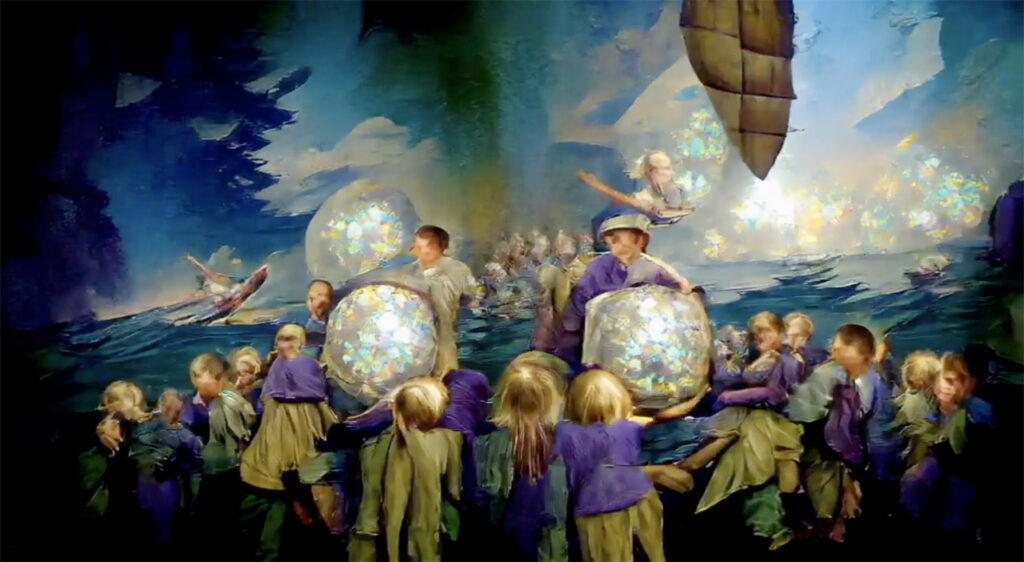The arrival of and growing demand for NFTs have compelled traditional art institutions to sit up and take notice of the emerging digital format. Some have embarked on NFT-related projects, while others have commenced deliberations on the medium. But there’s more to NFTs for museums to consider — from its blockchain-based community to its appreciating cultural value — and that might go some way to reshaping the art ecosystem.
With that in mind, digital art platform Rhizome and contemporary art organization Kadist hosted “Speculative Values: Between the Institution and the NFT,” a virtual event featuring 16 speakers and moderators. Split into four categories that tackled topics such as curation and virtual worlds, the event offered various perspectives on the evolving relationship between digital art and the cultural establishment. Here are three key takeaways.
Spotlighting non-traditional art

Holly Herndon and Mat Dryhurst, still from “Crossing the Interface (DAO) V,” 2021. Image: Foundation
The rise of NFTs has cast a spotlight on an emerging form that cultural institutions, in their bid to stay relevant, should be watching, if not participating in. Sound artist Holly Herndon expressed her optimism that with exposure and financial support (often through decentralized autonomous organizations) now more readily available to non-traditional artists, digital artists are bound to be empowered. Her fellow musician Mat Dryhurst added, “I’m super compelled by the idea of what will be built now by people who previously had to scramble to get anything made.”
The need for new forms of cultural labor
As the digital art space grows, the creation of “cultural labor,” or jobs dealing with cultural curation and distribution, is critical to the continued growth and sustainability of digital practices. It’s a task that JPG, a firm created in 2021 to support the NFT space, has undertaken. The company’s María Paula Fernández stressed the need to create more forms of cultural labor and infrastructure to deal with the massive and ever-growing supply of digital art. New firms must be created to meet the demands of the digital market, she says, to “support, elevate, and give value to the current NFT ecosystem, since… this is a new culture and even a new universe.”
The appreciation of digital art
As cultural labor begins to catch up with the evolving market for digital art, Artnome’s Jason Bailey noted, that art will become more valuable. He urged institutions and individuals to hold on to their digital art rather than selling them off. To sell digital art quickly and repeatedly would be a mistake for cultural institutions because rather than preserving material culture, they would simply be acting as auction houses.
More than financial appreciation, Bailey also highlighted the value of the digital medium in exposing more people to the art and museum worlds, noting that “NFTs are a gateway to sincerely appreciating art, and that is one the most heartening things for me.”



